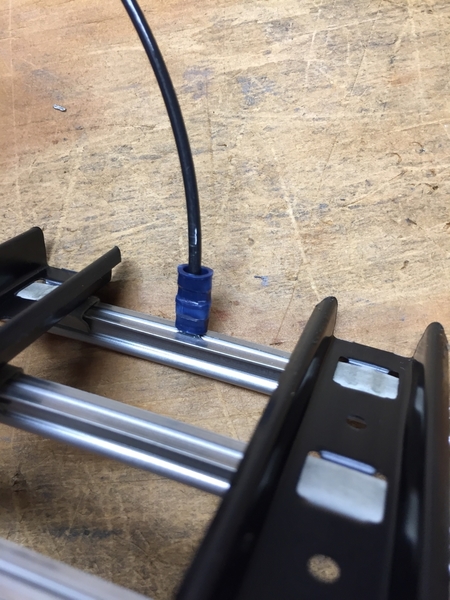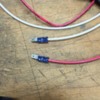Trying to get my first SG outfit (Lionel Outfit #40) ready for the Christmas tree.
I have three sections of "power track" - two straight, one curved, with what appears to be an early "lok-on", but permanently crimped to the rails, tack-soldered, and with binding posts and knurled thumb-nuts, like on the early Transformers.
I can see where the original solder joints are broken, and some rust on the tabs, so I decided to disassemble the curved section, clean the contact areas, tin, reassemble, and re-solder.
I carefully used my bench wire wheel (1725 rpm) to remove any rust, then tried to tin the contact areas with rosin-core 50/50 solder, and a big, old wooden-handled 75 watt iron.
When the tin-plate surface got hot enough to melt the solder, it just balled-up, rather than "running" and bonding to the rail / tabs.
After repeated attempts, and a lot of solder winding up on the bench, I placed a drop or two of Ruby Fluid tinning liquid (zinc chloride solution) on the spots, and tried again.
It sizzled, then the solder began to "run" and "take".
On the next couple spots on the rails, I tried some 600 grit on the areas before tinning, but I still had to use the Ruby Fluid to get the solder to adhere.
The rail surfaces were not rusty, just really dark gray. (Tin Pest?)
The contact tabs on the Lok-on were rusty, what I call "mouse rust" (rodent urine) or "battery rust" (leaky dry cells). The Lok-on tabs actually tinned more easily than the rails.
Finally, all is tinned, and tonight I will re-assemble the section, crimp, and re-solder the lok-on.
So, finally the question: once tin-plate goes dull / dark, does it become difficult to solder, due to chemical changes in the tin coating ?
Any suggestions for successful soldering? (Besides "just buy new track !" )
A good flux that won't cause problems down the road ?
This is a labor of love right now...
Thanks !
Fran McM
( I've always found trying to solder to steel to be dodgy at best... )








